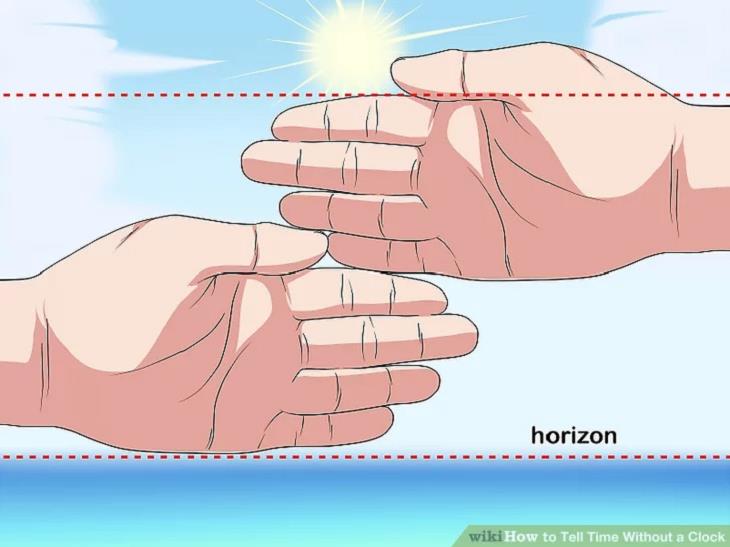
This method is the quickest. It will only work if you have a clear view of the horizon. Stand with your feet toward the sun and extend one arm out with your palm facing you. Align the top of your finger with the bottom of the sun, and measure how many fingers separate the sun and the horizon. If needed, stack your other arm below, as shown in the photo:
Each finger equals 15 minutes; each hand (without the thumb) equals an hour.
This method tells you how long it has been since sunrise if you stack your hands over the eastern horizon, or how long you have left till sunset if you stack your hands over the west. If you want to use this method to tell the exact time, you’ll need to know the exact times of sunrise and sunset.

Just like the previous method, this one is built on previous knowledge. You will either need to know the exact times of sunrise and sunset or how many hours there are in a day. Knowing both will help you determine the time most accurately.
If you don’t have any of this information, this method can still help you estimate the general relative time of the day, letting you know, for instance, that there is a quarter of the day left until sunset or that we’ve just passed midday.
Visualize the arc the sun makes when it passes through the sky. Now try dividing this arc into the number of hours in a day. The location of the sun on your arc will tell you the time with a deviation of 20 to 30 minutes.

This method requires some patience and a certain level of skill. If you have a compass, you can easily find the North. If not, here’s how to find a true North.
Find a straight stick and place it perpendicular to the ground. Place a rock at the end of your stick's shadow. After 20 minutes or so, the shadow will have moved. Place another rock at the edge of this new shadow. The first rock you placed marks your west, and the second one you placed marks your east.
Now that you have both west and east, finding north and south will be easy. Noon is when your shadow will point north. Use this axiom as a way to estimate the time according to where your shadow falls.
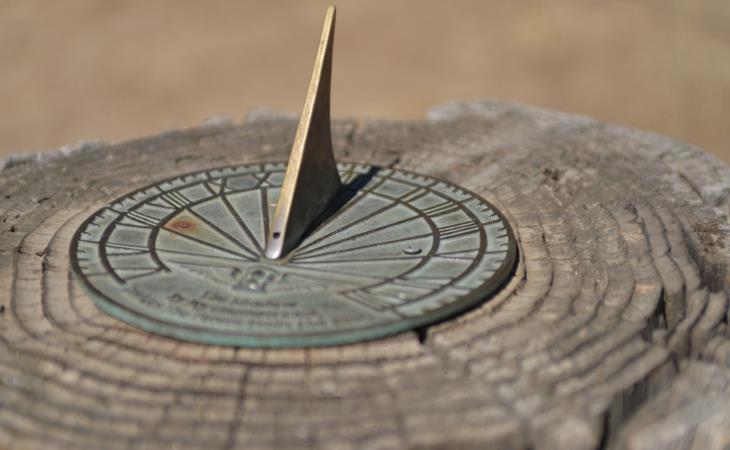
Most people think that making a sundial is as easy as taking a smooth round surface, poking a stick in the middle of that circle, dividing the circle into 12 equal parts, and calling it a day. This is true only if you’re on or close to the equator. Other sundials must be altered according to latitude and true North.
According to the European Association for Astronomy Education, the stick in the middle of a sundial called a gnomon, “must point towards the true North and the gnomon’s angle with the horizontal plane [flat surface of the sun dial] must be equal to the geographical latitude where the sundial is placed.“
By now, you probably realize that most sundials at stores aren’t accurate time tellers and will function better as garden accessories. Here is what you need to know to make an accurate sundial:
Find out your latitude by clicking here. Subtract your latitude from 90 to get the angle at which the gnomon should meet with your sundial surface. You will attach it at the midpoint between the center and perimeter of your sundial. The length of the gnomon will be the length between the noon point to the sundial's midpoint. For further information, visit Urban Survival.

Travel To The Ancient Shiratani Unsuikyo Forest In Japan
Get your virtual nature getaway here with 10 magnificent photos of a forest in Japan that has tress over 1,000 years old!

How Do Wild Animals Survive Winter Without Shelter?
Learn all the genius biological mechanisms animals use to survive winter in the wild - without central heating or warm socks.

10 RV Campgrounds in the US Every Camper Should Know
RV travel is a safe and mostly self-sufficient option for the summer. This article lists 10 of the most beautiful and convenient RV parks around the US.
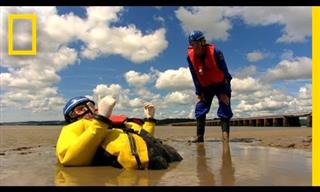 5:09
5:09
How Does a Quicksand Rescue Work?
How do rescue forces save you from quicksand? Let's find out.

Marina Serra - the Natural Swimming Pool of Italy
The locals call it "una piscina naturale" - a natural swimming pool. It offers shallow waters and is hidden from the tides by natural stone walls.
 8:10
8:10
Winter Hikers, Gather Round for the Best Tip of the Season
Here's how advanced snow hikers layer clothing in the winter.
 10:50
10:50
A Magnificent Spectacle by the French Cirque de Soleil
These talented and brave artists use swings to perform amazing aerial stunts and fly like birds.

Ever Hear of the 54321 Shopping Method to Buying Groceries?
Grocery shopping has become increasingly stressful as prices continue to climb. Many shoppers find themselves struggling to balance their budgets while still putting nutritious food on the table. But a straightforward shopping strategy is helping peo

Lemons in the Oven? Read This Article to Find Out Why
Sick of mosquitoes and flies visiting your house? This surprising method will help you get rid of them effortlessly using lemons and an oven!

12 Tasty Ways to Use Overripe Fruit Before They Spoil
With these tips, you can enjoy healthy and tasty snacks, and prevent waste of fruits that seem like they are about to become inedible in a short time.

10 Questions You've Always Wanted the Answer To
In this post, we dive into 10 fascinating questions you've probably wondered about at some point in your life, offering clear and concise explanations to satisfy your curiosity.
 7:46
7:46
Beginner’s Guide to Spices: Storage and Which You Must Get
There IS a right and wrong way to store and organize your spices. Whether you're a beginner or a spice fanatic, you'll find these tips useful!

Learn How to Spot Fake Jewelry With This Guide
Fake jewelry has been around for a long time, with silver being sold as white gold and fake hallmarks being engraved into pieces of jewelry. Unsure if your jewelry is real or fake? This guide explains all.

Decanting 101: Tips to Simplify and Organize Your Space
Read on to discover how decanting can help you organize your living space.

Know the Signs: The Complete Guide to Body Language!
You can learn a lot about a person’s intent by reading his body language, so find out just what that wink meant with this helpful guide.

6 Great Benefits of Waking Up Early
Do you promise yourself that you'll wake up early the next day, but at the moment of truth you hit the snooze button? Stop this with these 11 tips!

Your Old Spices Can Still Work Wonders Around the House
Here are 11 clever ways to use up spices that have lost their zing.

Nutritional Tips for Older Dogs: Diets That Work
Make sure your senior dog stays healthy with these tips.

Wow! Even We Were Amazed At These 11 Ingenious Tips
Everyone needs some tips in life, and these 11 are worth remembering because they'll help you solve a variety of problems, make life easier and save money!

These Surprising Garlic Uses Show It's More Than Just Food
While garlic is an important ally for natural health, it has many more functions. Check out these 14 unusual alternative uses for garlic.

What an Amazing Laundry Whitening Solution This Is!
It's always hard to get stains from white fabrics, isn't it? Not any more! Check out this brilliant whitening solution for your laundry you can make at home!

10 Amazing Ways to Use Oatmeal Flakes Outside the Kitchen
You will be surprised to discover these other alternative uses for oatmeal flakes outside the kitchen.

Never Flush or Pour These Items Down Your Drain!
Drains aren't capable at dealing with everything that you throw down them. Here are 10 items that you should never throw down the drain!

The 5-Hour Rule: Successful People’s Best Kept Secret
While many want for success, few are able to achieve it. This 5-hour rule will help get you on the right track!

So You Think You Shop Online Safely? This May Surprise You
If you shop online, you need to know how to avoid fake websites and low quality goods. For these and more online shopping tips, read this article.
 18:23
18:23
42 Incredible Life Hacks That'll Save You Money!
42 different smart methods to make sure you save yourself some money.

Save Your Time! 11 Tricks to Cut Down on Dusting
To ease your suffering and save you lots of time, we’ve compiled a list of 11 useful tricks that will reduce the amount of dust in your home.
 8:03
8:03
Hidden Features in Everyday Objects We Bet You Don’t Know
Do you know why toothbrushes have blue bristles? Or why notebooks have margins? Learn about the secret practical features of 30 everyday objects.

9 Smells and Sounds Your Car Makes Before a Breakdown
These car noises and smells could mean a major problem!

Simple Self-Love: The Top 20 Ways to Be Kind to Yourself
You probably spend all your time being nice to others, but we bet there’s one person that you often forget about: yourself. Here's how to be kind to yourself.
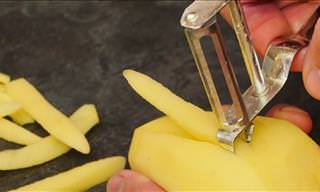 3:25
3:25
You May Not Be Using Your Peeler Properly...
The common kitchen peeler is a lot more versatile than you thought.

8 Natural & Easy Treatments for Common Shaving Mishaps
Discover 8 remedies for shaving mishaps, and also learn some prevention tips that will allow you to shave effectively, comfortably, and without side effects.
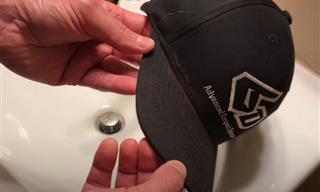 3:52
3:52
How to Best Remove Sweat Stains From Your Hats
Sweat stains can ruin the look of your hats. Here's how to remove them once and for all - quick and easy!

10 Laundry Hacks That Save Time and Money
Want to cut laundry time in half? Then consider these 10 tried and tested laundry hacks

Sparklers Are Safe for Children, Right? Think Again
Every year, thousands of people are injured due to unsafe conduct around fireworks. Here are tips to safely use recreational pyrotechnics.

14 Easy Solutions to Everyday Problems You’ll Want to Know
Here we have compiled 14 ingenious solutions to annoying little everyday problems we could all do without!
 3:50
3:50
A Chef’s Secret to Cooking Potatoes In Half the Time
Potatoes are the ultimate side dish, but they can take quite a long time to cook. This trick will cut the cooking time by half.
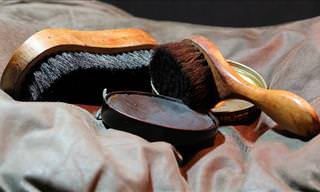
Keep Your Shoes in Top Shape with These Tips and Tricks
Learn how to always keep your shoes in top shape, no matter their age or fabric. I guarantee, it will save you a lot of money because you won’t have to buy new shoes so often anymore.

Been Stung by a Bee? Treat It With These Home Remedies!
Bee stings are a nuisance and can even be deadly if you're allergic to bee venom. Here are some home remedies that'll help to treat a bee sting.

Here's How to Clean Hard-to-Reach Spots In Your Car & Home
It's not nice when you can't get something in your house or car as clean as you want it to be, but as you will see, where there's a will, there's a way...
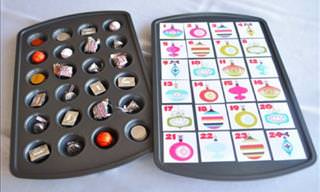
Give Your Old Bakeware a New Lease of Life With This Guide
Many of us are guilty of letting bakeware pile up in our cupboards, but this guide will show you how to give it a new lease of life. See these 10 great ideas.

17 Inexpensive Ideas to Add Some Style to Your Kitchen
Simple and inexpensive fixes to spruce up the most functional room in your home.
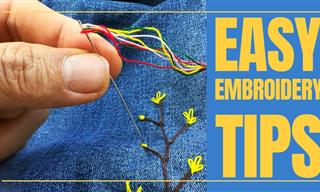 4:34
4:34
7 Super Useful Embroidery Tips and Hacks
Get to know 6 tricks for creating beautiful embroidery designs on clothes—perfect for beginners, but also for those already familiar with the technique.

Color These Mosaics Your Way – Coloring Pages for All Ages
. If you already have some colored pencils or markers in various shades, you can print out the following 20 coloring pages we’ve collected for you here.

Laundry Tips: Make Your Towels Soft and Fluffy Again
Here are some useful tips that will help you make your crusty towels feel soft and fluffy again while also increasing their longevity.
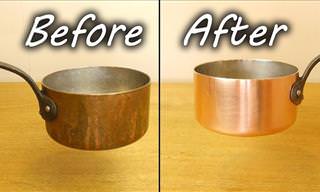 1:30
1:30
This Is How to Effortlessly Clean Copper Pans
Make your copper pots and pans look brand new once again, using only some household supplies that you've probably got laying around at home.

7 Handy Bathroom Hacks That Will Make Your Life Easier
Here are some handy bathroom life hacks that will help you keep it clean and well-organized conveniently.
 14:52
14:52
Here Is the Secret For Making the Perfect Hamburger
This video is for those of you who are hamburger enthusiasts and want to learn everything there is to know about making a savory burger.
 17:11
17:11
11 Signs Your Cat is Feeling Lonely
We'll explore all the lonely cat symptoms every devoted cat parent should recognize, so you can understand if your furry companion is feeling bored, sad, or simply craving more of your wonderful company.
To enable your Ad-Free Subscription, please fill the fields below
Your subscription was successful, now you can enjoy an ad-free experience!! Note: To make sure you get no ads, please make sure to log in to your account. If you are logged in already, then refresh the page. The subscription can be cancelled at any time.



